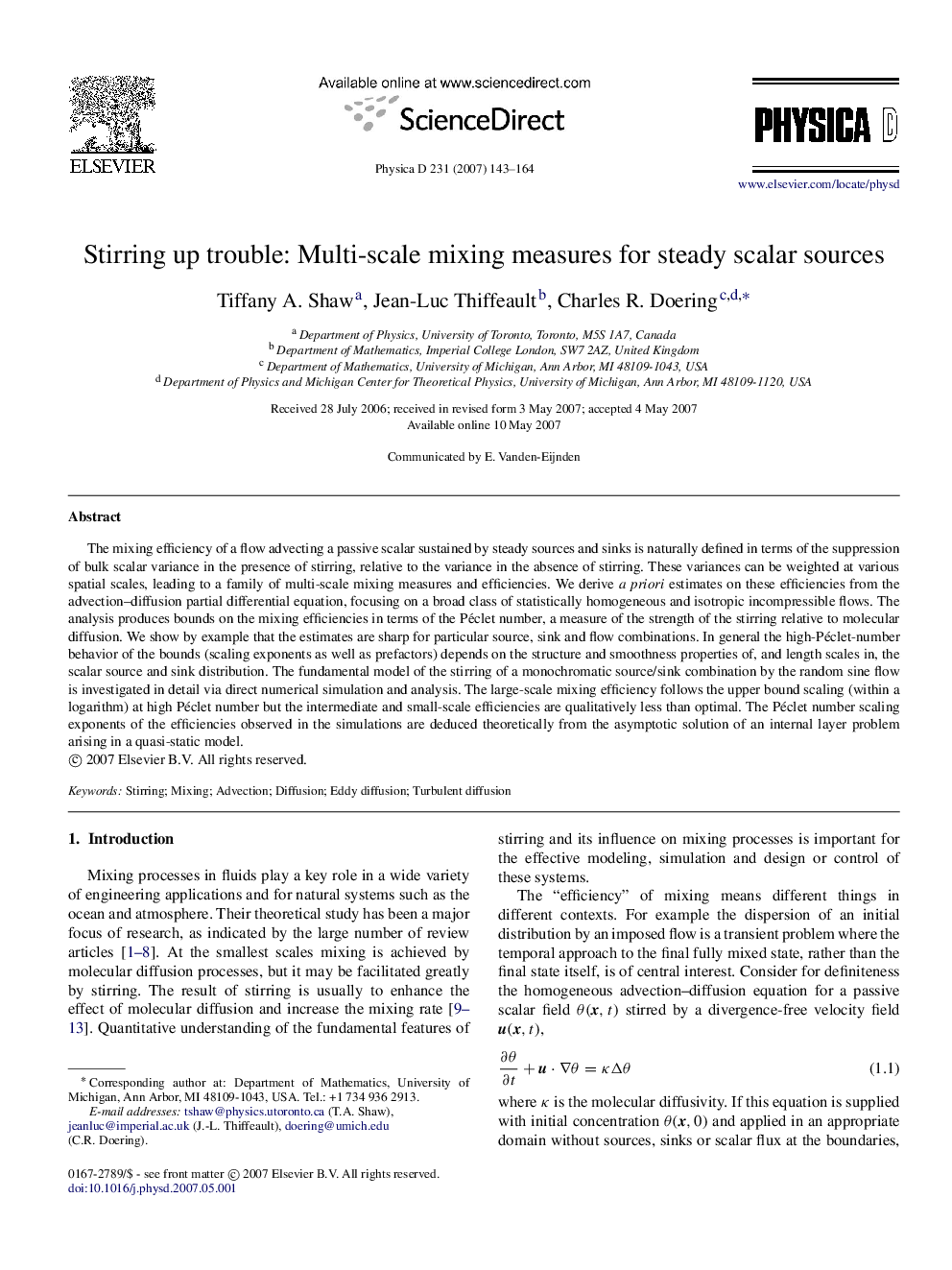| Article ID | Journal | Published Year | Pages | File Type |
|---|---|---|---|---|
| 1898006 | Physica D: Nonlinear Phenomena | 2007 | 22 Pages |
The mixing efficiency of a flow advecting a passive scalar sustained by steady sources and sinks is naturally defined in terms of the suppression of bulk scalar variance in the presence of stirring, relative to the variance in the absence of stirring. These variances can be weighted at various spatial scales, leading to a family of multi-scale mixing measures and efficiencies. We derive a priori estimates on these efficiencies from the advection–diffusion partial differential equation, focusing on a broad class of statistically homogeneous and isotropic incompressible flows. The analysis produces bounds on the mixing efficiencies in terms of the Péclet number, a measure of the strength of the stirring relative to molecular diffusion. We show by example that the estimates are sharp for particular source, sink and flow combinations. In general the high-Péclet-number behavior of the bounds (scaling exponents as well as prefactors) depends on the structure and smoothness properties of, and length scales in, the scalar source and sink distribution. The fundamental model of the stirring of a monochromatic source/sink combination by the random sine flow is investigated in detail via direct numerical simulation and analysis. The large-scale mixing efficiency follows the upper bound scaling (within a logarithm) at high Péclet number but the intermediate and small-scale efficiencies are qualitatively less than optimal. The Péclet number scaling exponents of the efficiencies observed in the simulations are deduced theoretically from the asymptotic solution of an internal layer problem arising in a quasi-static model.
